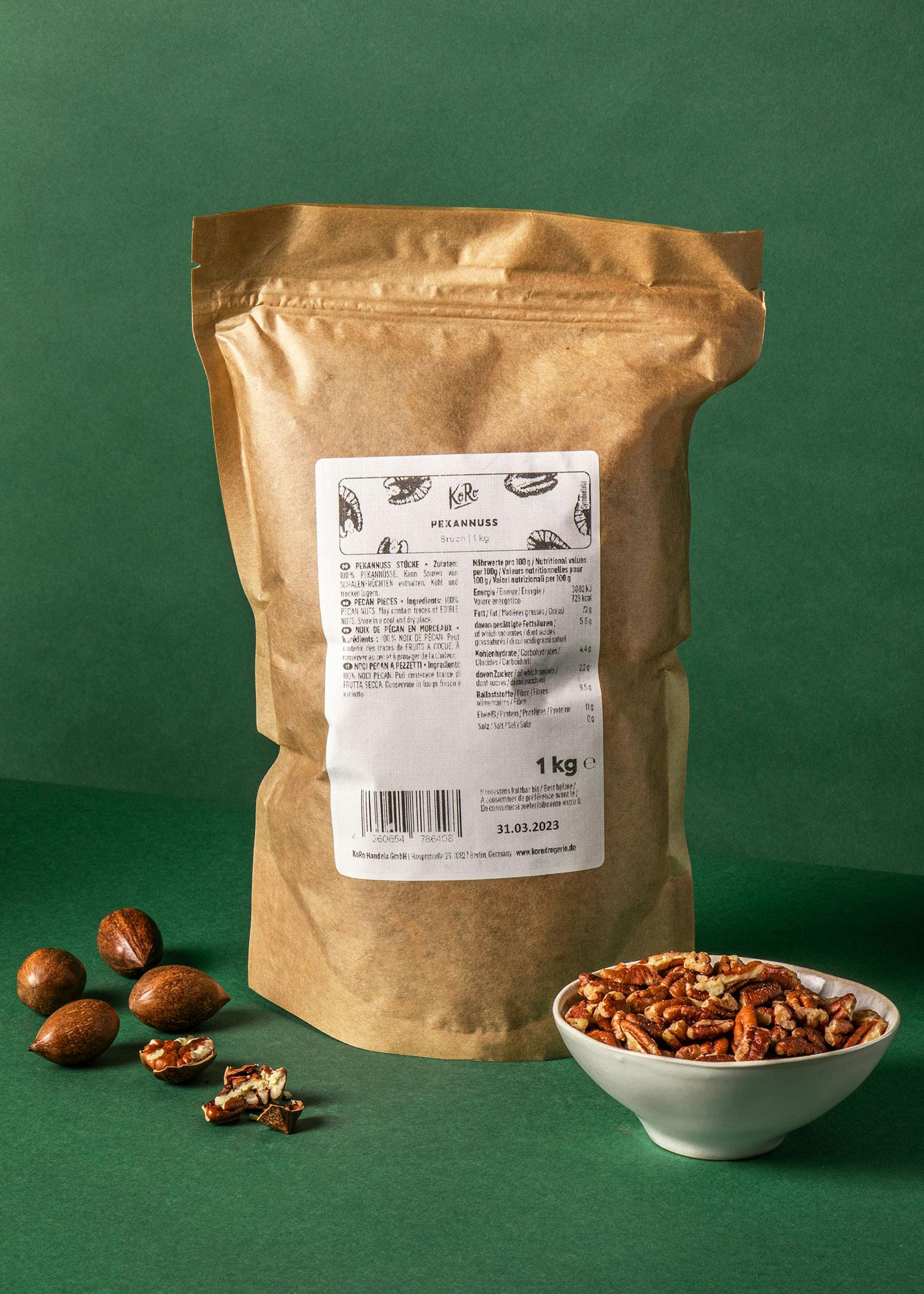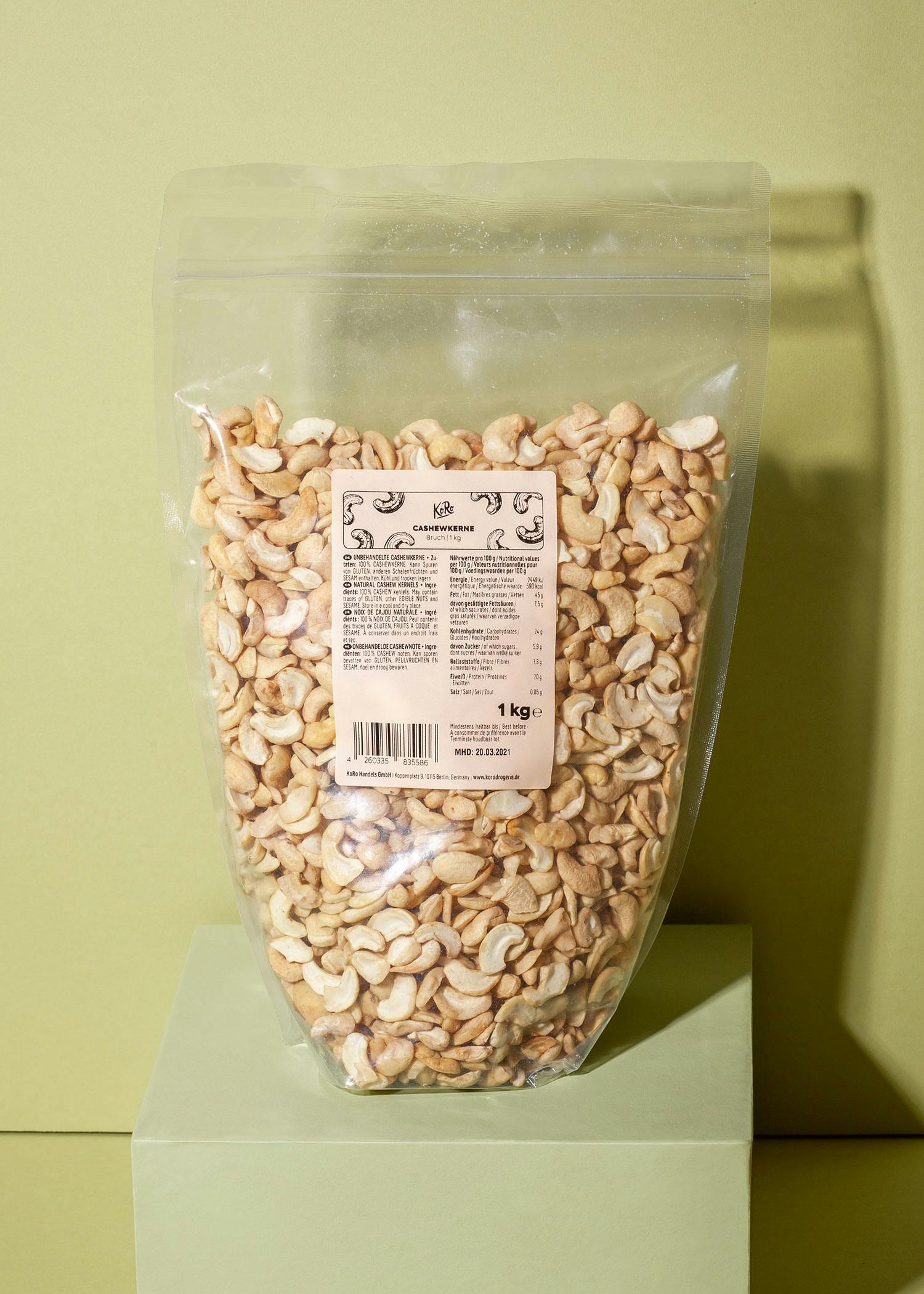We chatted to two colleagues from the KoRo team and asked them to shed some light on the world of broken goods. Celine is a Senior Sourcing Manager and has been testing all snacks for four years before they end up in our store and on supermarket shelves. Whether broken or not - her specialty is nuts. Roman has been Senior Category Manager since 2023 and is a pro when it comes to chocolate and other sweet snacks and spreads.
Hey, you two! You often find products in our store that are labeled "broken". What does that actually mean?
Celine: In the case of nuts, it means that they don't comply 100% with certain guidelines. There is a guideline for every nut that specifies the standard for the nut. The quality that a nut must meet is set out very precisely and with pictures. Then, for example, it is about how light or dark a nut is or the "defects" are recorded. In other words, how many percent of a particular nut may be missing in order to be sold as a "whole nut", for example. This is different for each nut. We are largely guided by the US standards: With pecans, for example, there are break sizes called "pieces". To be classified as small, medium or large, the pieces must have a certain diameter. Regardless of the size, we naturally make sure that the nuts are of the best quality.
Roman: During chocolate production, chocolate that does not meet certain specifications one hundred percent is sorted out. Then it no longer counts as "A goods". Chocolate with visual defects also becomes a broken or B-goods product. But: don't worry, we will of course label it if allergens are present in the products!
Does this mean that the products are not necessarily "broken", as one might think when hearing the word "broken goods"?
Roman: Exactly, the chocolate doesn't necessarily have to be broken, but the term is well established.
How do broken goods come about?
Celine: The various process steps simply determine this. The nut can break during harvesting, transportation, the cracking process or cleaning. These processes are largely mechanized nowadays, but breakage can still occur from time to time. This is different with hand-cracked nuts, for example. Our whole walnut kernels, for example, are hand-cracked from Chile. They are naturally of a particularly high quality, look great and are 90% intact. Machines don't always manage this quite so well and so there are always a few "broken" percentages left over at the end. With cashew nuts, for example, around 30% of the nuts are broken.
Roman: In the production of chocolate bars, different varieties are produced in one production line every day. When you change varieties, you also change the raw materials, so you use different fillings and different mixtures. The fact that this is a continuous production process means that there is a certain amount of bars left over from the previous production run when changing varieties. It is therefore possible that a chocolate is produced that is not one hundred percent chocolate A and not one hundred percent chocolate B.
Why are the products cheaper?
Celine: Broken goods are simply the larger mass that is created during production. There are more nuts that have small defects or where a piece has broken off. Walnuts, for example, are more popular whole because they lose oil when broken and therefore lose their flavor a little faster. This is not a bad thing per se, producers just need to be more careful with storage. The end customer usually doesn't care in the end, but bakeries, for example, often prefer to use whole nuts for decorating. This means that the demand for whole nuts is greater than what is on offer. Accordingly, broken goods are cheaper.
Roman: In the end, the chocolate is cheaper because, on the one hand, it is sorted goods. On the other hand, the B-goods also save on packaging in line with the KoRo principle. By skipping this stage of the trade, we can dispense with unnecessary packaging material.
What can you do with broken goods?
Roman : Of course, you can simply snack on the chocolate. But the bags are also great for parties because they come in larger quantities. What's more, you can simply wrap the chocolate pieces yourself, mix the varieties and give them as gifts.
Celine: You can actually use the broken nuts in the same way as whole nuts. For example, I often put nuts in my muesli - in my opinion, it's more practical if the nuts are broken into small pieces. No wonder our cashew crush is an absolute bestseller! The products are also great for cooking or baking. The nuts usually have to be chopped into small pieces anyway. If you are particularly motivated, you can also use the products to make your own nut butter or nut drinks. If you prefer to save yourself the effort, you can buy them directly from our store.





